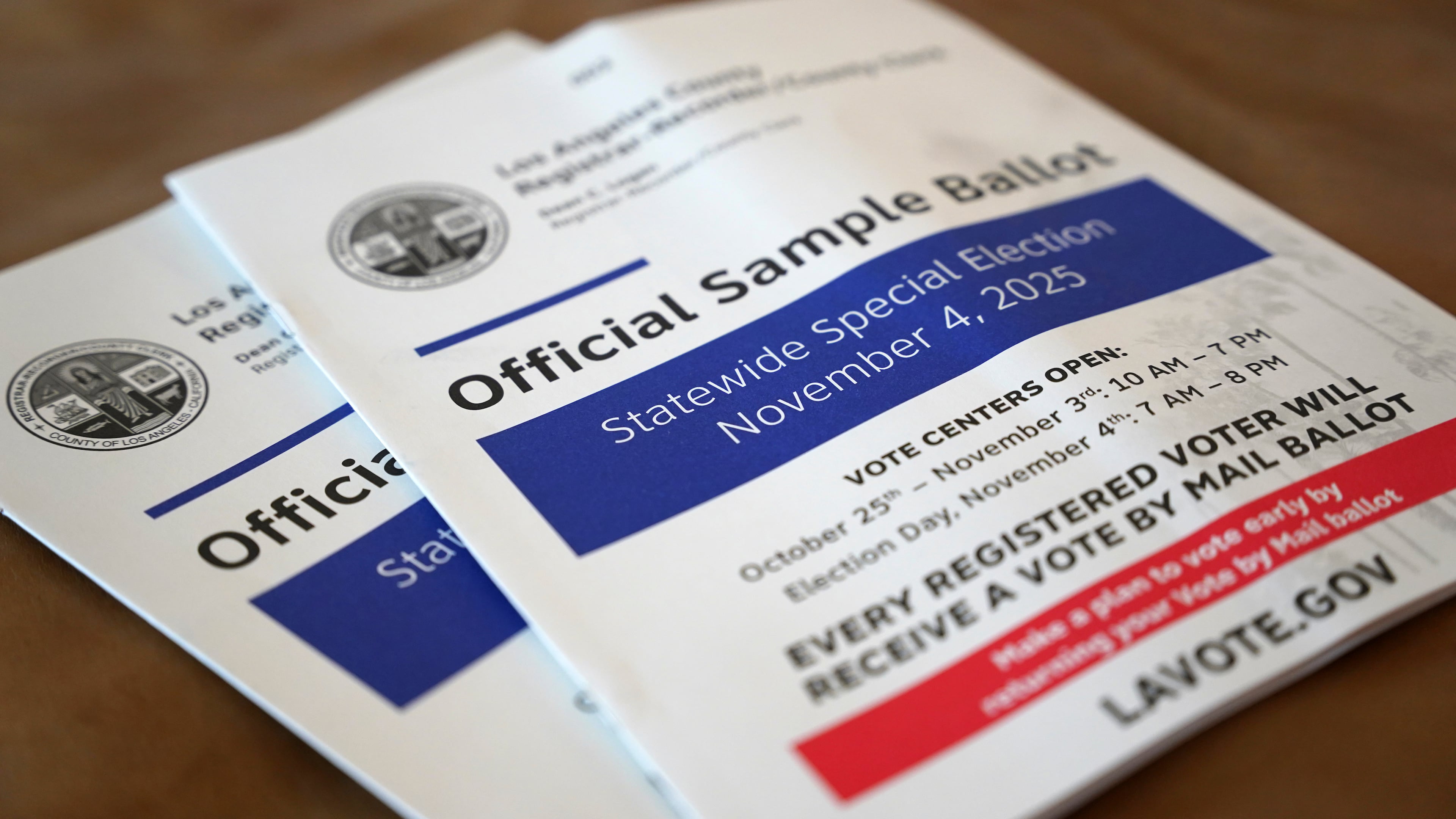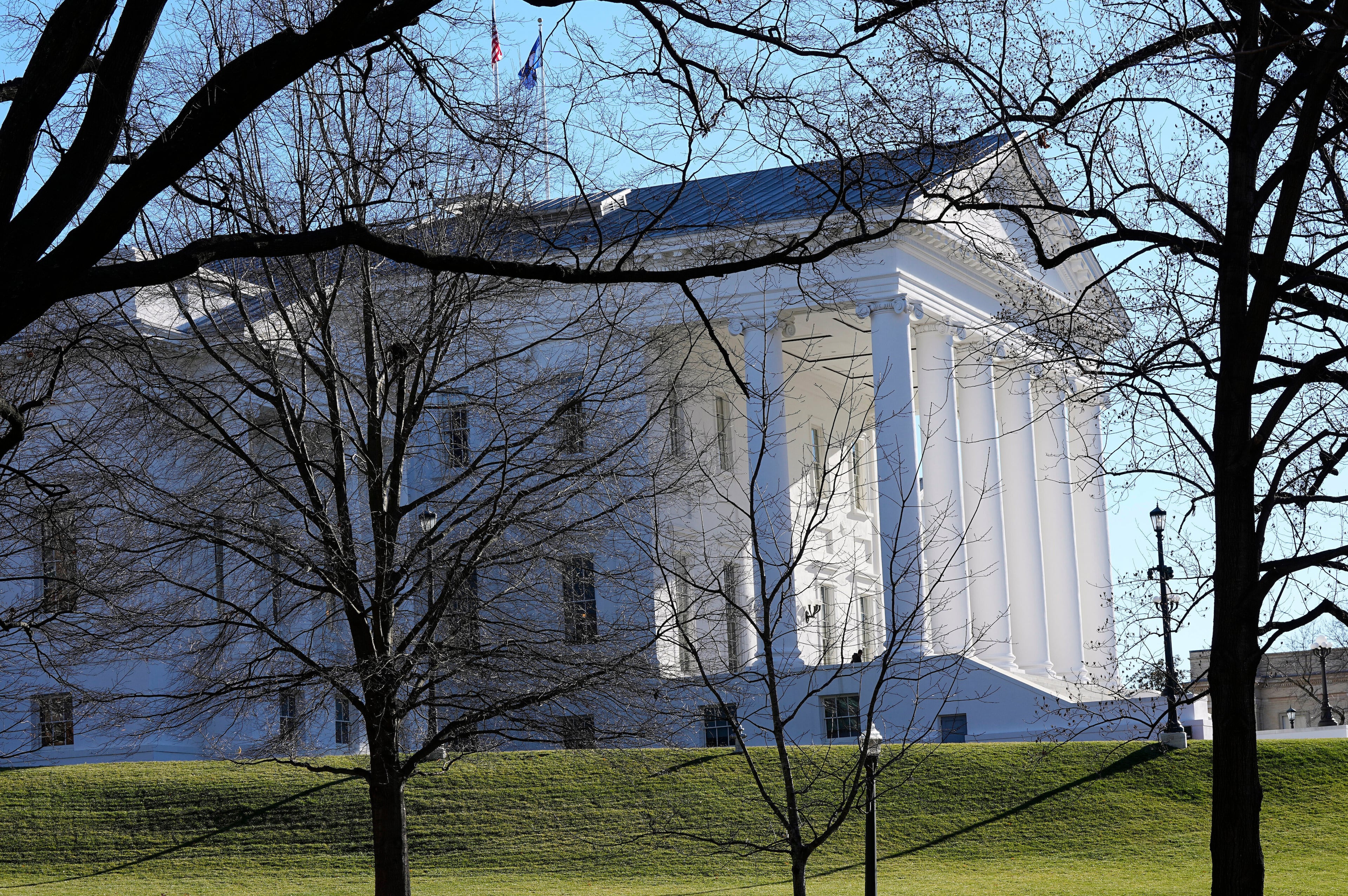AP Decision Notes: What to expect in California's special election

WASHINGTON (AP) — Led by Gov. Gavin Newsom, California Democrats are charging toward a new congressional map that could flip as many as five U.S. House seats from Republican to Democratic control. But first, they need voters to sign off.
California voters head to the polls on Tuesday with just one yes-or-no question on the ballot. Passing Proposition 50 would implement a new congressional map, which passed the state legislature in August, for the next three election cycles. After the 2030 U.S. Census, the state's independent redistricting commission would resume drawing maps.
Politicians around the country are reshaping congressional voting districts — a task typically done just once a decade, after each census — in an effort to give their parties’ candidates an edge in next year’s elections. The national battle over partisan gerrymandering began in Texas, after a push from President Donald Trump. The Republican-controlled state adopted a new map in August that could flip five Democratic-leaning U.S. House seats. California was the second state to make moves. Between the California legislature passing the map and this election, Missouri and North Carolina both adopted new maps. Other states may soon follow.
The outcome of this ballot measure could help determine control of the U.S. House after the 2026 midterm elections, which will see Republicans try to buck a historical pattern of the president’s party losing seats in midterm elections. The GOP's margin is slim: Heading into Tuesday's election, Republicans control 219 seats to Democrats' 213, with three vacancies.
If Prop 50 is approved, it’s possible the Democrats could control as many as 48 of California’s 52 congressional seats, up from the 43 seats the party now holds. In some cases, the recast districts would slice across California, with one uniting rural, conservative-leaning northern California with Marin County, a liberal coastal stronghold north of San Francisco. In others, district lines are left unchanged or have only minor adjustments.
Partisans have lined up on both sides of the measure, which has seen well over $200 million in contributions.
If support for the ballot measure breaks along partisan lines — which is not a guarantee — the Democratic-backed “Yes” side would be favored to pass. The Democratic Party has a statewide voter registration advantage of more than 4.5 million voters, and Democratic presidential candidate Kamala Harris won California by around 20 percentage points last fall.
Opponents of the measure, which include major Republican figures from the state ranging from former House Speaker Kevin McCarthy to potentially affected representatives, have reported raising more than $80 million. National Republicans are kicking in: The Congressional Leadership Fund, a super PAC dedicated to electing Republicans to the U.S. House of Representatives, has kicked in $5 million.
The “No” on 50 campaign also benefited from the high-profile involvement of former Gov. Arnold Schwarzenegger, one of the last Republicans to win statewide office and a longtime opponent of gerrymandering. They're framing the initiative as a scheme by Democrats to boost their own influence and circumvent the voter-approved independent redistricting commission.
But the “No” campaign is shorter on cash than its opponents. The “Yes” side has raised around $138 million, according to data from the California secretary of state's office. And data from AdImpact, the nonpartisan advertising tracker, indicates the “No” side's ad spending has slowed to a trickle in the lead-up to the election.
Newsom and both national and statewide Democrats have been very involved in advocating for the measure. Newsom contributed $2.6 million of his own campaign funds, while the House Majority PAC, an independent expenditure group backing Democratic House candidates, put in almost $15 million.
The Associated Press does not make projections and will declare a winner only when it’s determined there is no scenario that would allow the trailing candidates to close the gap. If a race has not been called, the AP will continue to cover any newsworthy developments, such as candidate concessions or declarations of victory. In doing so, the AP will make clear that it has not yet declared a winner and explain why.
There are no automatic recounts in California. Any registered California voter may request a recount, but the voter or campaign committee represented by the voter requesting the recount must pay for it. The AP may declare a winner in a race that is eligible for a recount if it determines the lead is too large for a recount or legal challenge to change the outcome.
Here’s a look at what to expect:
Election Day
California's special election will be held Tuesday, though mail-in voting has been available for weeks. Polls close at 8 p.m. PT, or 11 p.m. ET.
What’s on the ballot?
The AP will provide vote results and declare the winner in the redistricting ballot measure.
Who gets to vote?
Any voter registered in California may participate in the special election.
What do turnout and advance vote look like?
As of Sept. 5, there were about 23.1 million registered voters in California. Of those, 45% were Democrats and 25% were Republicans. About 5.2 million voters were not registered with any party.
Turnout in the 2021 gubernatorial recall, an off-year election in which that statewide vote was the only contest on the ballot, was about 58%.
As of Oct. 28, a total of 4.74 million ballots had been cast before Election Day. See the AP Early Vote Tracker for the latest update.
How long does vote counting usually take?
In the 2024 presidential election, the AP first reported results in California at 11:12 p.m. ET, or 12 minutes after polls closed. The vote tabulation ended for the night at 7:00 a.m. ET with about 54% of total votes counted.
Are we there yet?
As of Tuesday, there will be 364 days until the 2026 midterm elections and 1,099 days until the 2028 general election.
___
Follow the AP’s coverage of the 2025 election at https://apnews.com/projects/election-results-2025/.

